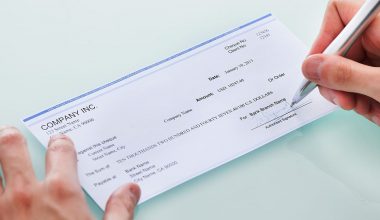Liabilities are debts or responsibilities owed to another individual or entity. A liability, for example, can be as modest as an IOU to a friend or as large as a multibillion-dollar loan to buy a software business. Liabilities are the building blocks of a company’s finances and are frequently utilised to fund operations and developments in business. Here’s a breakdown of what liabilities entail in marketing:
What Are Liabilities?
A liability is nothing more than a debt or obligation. The majority of people have liabilities in their daily lives, such as car payments, rent, and credit card obligations. Similar liabilities exist in corporate finance, although on a far bigger scale.
Long-term loans for funding operations, money owed to vendors or suppliers, and warehouse leases are all examples of liabilities for a firm. A liability exists when a corporation owes someone or something money.
What Are Liabilities In Accounting?
Liabilities are any debts owed by your organisation, such as bank loans, mortgages, unpaid payments, IOUs, or any other sum of money owed to someone else.
If you commit to paying someone money in the future but haven’t done so, you have a liability.
How To Find Liabilities
All of your liabilities can be found on your company’s balance sheet, which is one of the three key financial statements. (The income statement and cash flow statement are the other two.)
Every balance sheet is broken into three parts:
- The assets column, which shows how much money you have.
- The equity column, which shows how much you and other investors have put into your company so far.
- The liabilities column, which explains what you owe.
Balance sheets were traditionally written in two columns, with the left column always reserved for assets and the right column usually reserved for liabilities and equity.
Who Handles These Debts?
Business owners and members of a company’s financial team are accountable for recognising what liabilities their firm has and how they influence the organisation as a whole.
Accountants must also grasp how these debts and responsibilities affect an organization’s finances. Accounting processes sometimes entail investigating the interrelationships between liabilities, assets, and equity and how they affect a company’s profitability and performance.
Even in corporate finance, such as investment banking and private equity, understanding the role of liabilities in a company’s financial structure is critical to comprehending the company’s overall financial position.
Different Types of Liabilities
#1. Current liabilities
Current liabilities are debts and commitments that are due within a year. Examples of common current liabilities include:
- Accounts payable: Money owed to lenders, clients, consumers, and suppliers by the company
- Short-term loans: Loans with one-year or less repayment terms
- Long-term debt payments: Payments are due on larger loans with repayment terms of more than one year, and the balance owed is classified as a non-current liability.
- Interest: Loan interest that has not been paid
- Accrued liabilities: Any outstanding short-term loans from earlier fiscal periods
- Income taxes: Income taxes owed to the federal, state, and local governments that have yet to be paid
- Unearned revenue or deferred revenue: Money received by the corporation for goods or services that have not yet been delivered to the customer
- Commercial paper: Unsecured promissory notes with fixed interest rates used by businesses to fund critical liabilities such as payroll.
#2. Non-Current liabilities
Also known as long-term liabilities, non-current liabilities, are debts and commitments that are due in the future but not within the next year. Non-current liabilities include the following:
- Bonds: A type of marketable security that has a specified maturity date (when payment is due in full) and interest rate
- Deferred tax: Federal, state, and local taxes owed, though not due immediately
- Long-term debt: Loans and other debts that are not due within the year, including remaining principal amounts on loans paid in increments
- Mortgages: Agreements with lenders that give the lender the right to repossess the purchased property if the loan is not repaid
- Leases: Payments for the use of another person’s property or assets, such as machinery, office spaces, and vehicles
- Pensions: Retirement funds for employees
#3. Contingent liabilities
Contingent liabilities are debts or obligations that may or may not occur in the future. These are contingent (or reliant on) specific events. Legal expenditures incurred as a result of a lawsuit are the most common example of a contingent liability. For example, if the corporation wins the case and is not required to pay any money, it is not required to pay off the debt. If the firm loses the litigation and has to pay the other party, the company must cover the obligation.
A warranty is another example of a contingent liability. If a company’s product needs to be repaired or replaced, the company must have the finances to honor the warranty agreement.
However, not every probable scenario can be anticipated. As a result, only specific contingent commitments must be declared when it comes to reporting a company’s finances. Accountants are only required to identify probable liabilities on a company’s balance sheet under generally recognized accounting rules (GAAP). These are events that are quite likely to occur, and the cost may be calculated properly.
The balance sheet does not need to include the other two types of contingent liabilities, possible and remote, because they are less likely to arise and considerably more difficult to predict. However, accountants should note potential contingent liabilities in the footnotes to the company’s financial statements.
Assets and Liabilities
When accountants analyse a firm’s financial prognosis, they consider how a company makes money as well as elements that reduce a company’s profitability. We refer to these as “assets” and “liabilities.” These metrics are critical to grasp because they can help establish a company’s overall financial soundness.
What Is The Difference Between Assets And Liabilities?
Assets and liabilities are accounting words that assist firms identify goods that generate income as well as those that deplete company profits. Businesses also refer to them as “profits” and “losses.” Assets are a company’s resources, whereas liabilities are its commitments. An asset can assist business owners and financial specialists in determining what the company owns. Liabilities show how much money a corporation owes.
Types of Assets
Assets are classified into a few broad categories based on the type of investment or object and its intended use.
Current (short-term) assets
The items that a business uses up over the course of a year are its current assets. Among them are the following:
- Accounts receivable
- Cash
- Inventory
- Marketable securities
- Prepaid expenses
Non-current (Long-term) assets
Long-term assets continue to generate money for a company for many years. They are classified into two major groups:
- Fixed tangible assets: Tangible assets include equipment, furniture, land, buildings, and cars.
- Fixed intangible assets: Patents, trademarks, copyrights, and other intellectual property are examples of this.
Investment Assets
Investment assets are classified according to how they generate revenue for a company:
Growth Assets
These assets include investments with the potential to rise or fall in value over time. While a company aims for expansion, these items frequently shift in value.
Growth assets include the following:
- Property for rent
- Equity investments
- Investments
Defensive assets
Defensive assets protect against investment swings. They are more reliable and provide revenue through dividends.
The following are examples of a company’s defensive assets:
- Savings accounts
- Certificates of deposit
- Debt securities
Types Of Liabilities
Current liabilities
These liabilities, sometimes known as “short-term liabilities,” contain the following expenses that are due within a year:
- Accrued expenses
- Taxes
- Accounts payable
- Principal and interest payable
- Short-term loans
- Unearned revenue, such as money paid before a service is rendered
Non-current liabilities
A long-term liability comprises recurring expenses such as the ones listed below:
- Mortgage payable
- Notes payable
- Bonds payable
- Deferred tax liability
- Capital leases
What Is Equity?
Equity is the amount left over after subtracting a company’s total liabilities from its total assets. It’s a method of calculating a company’s worth after all debts are paid and profit is left over.
Depending on the size of the company, equity can be referred to in a variety of ways. In a small business, equity impacts the owner or a small group of partners because they are usually the ones covering all of the business’s costs. This is referred to as “owner equity.” A larger corporation, on the other hand, is accountable to investors who give funding for the company to function and make profits. This kind of equity is known as “shareholders’ equity.”
Both types of equity take into consideration how much owners or shareholders put in a firm, as well as the retained earnings a company generates as a result of their income.
How to Calculate Equity
The steps below can assist you in determining the amount of equity in a business:
#1. Identify your assets
To determine the amount of equity a firm has, you must first determine the total assets of the company. To establish the value of your assets, add up everything that generates income or contributes to your company’s profit. This can also include anything valuable that the company owns.
#2. Determine your liabilities
Because liabilities are the inverse of assets, you must identify the elements that cause a corporation to incur debt. Many obligations, such as mortgages for houses or employee payroll, can be advantageous or even required. Liabilities, on the other hand, must be recorded as a loss for the business.
#3. Calculate equity by combining assets and liabilities.
Equity is calculated by adding up a company’s assets and subtracting its total liabilities from that amount. The balance symbolises a company’s equity. A simple definition of equity is assets minus liabilities.
The formula is as follows:
Assets – liabilities = equity.
The Assets, Liability and Equity Equation
Accountants employ equity, liabilities, and assets to calculate the “balance sheet equation,” often known as the “accounting formula.” This equation, which essentially reworks the equity formula, combines a company’s equity and liability to determine total assets.
Here’s how it works:
Equity + liability = assets
Accountants utilise this statistic to uncover anomalies and ensure that assets, liabilities, and equity are all accurate and disclosed in order to ensure a company’s financial health.
In Conclusion,
As a small business owner, you will face many forms of liability as you operate. It could be as basic as your electric bill, office rent, as well as other forms of business spending. It’s an expected element of conducting business.
As your company grows and expands, you will most certainly incur additional debt. This is why understanding the distinctions between current and long-term liabilities is crucial. It is also critical to ensure that they are appropriately recorded on your balance sheet.
Liabilities can be divided into three groups. There are three types of liabilities: current liabilities, long-term liabilities, and contingent liabilities. The most typical liabilities in your firm will be current and long-term liabilities.
Accounts payable, accrued expenses, and unearned revenue are examples of current liabilities. Bonds payable, notes payable, and capital leases are examples of long-term liabilities. Contingent liabilities are liabilities that may occur but are not assured to occur.
- CONTINGENT WORKER: Deinition, Salary, Merit, Demerit & Difference
- Contingent House: Guide for Buyers and Sellers
- Contingent Offers: Definition and Detailed Guide
- WHAT IS A CONTINGENT WORKFORCE MANAGEMENT? Benefits and Drawbacks






